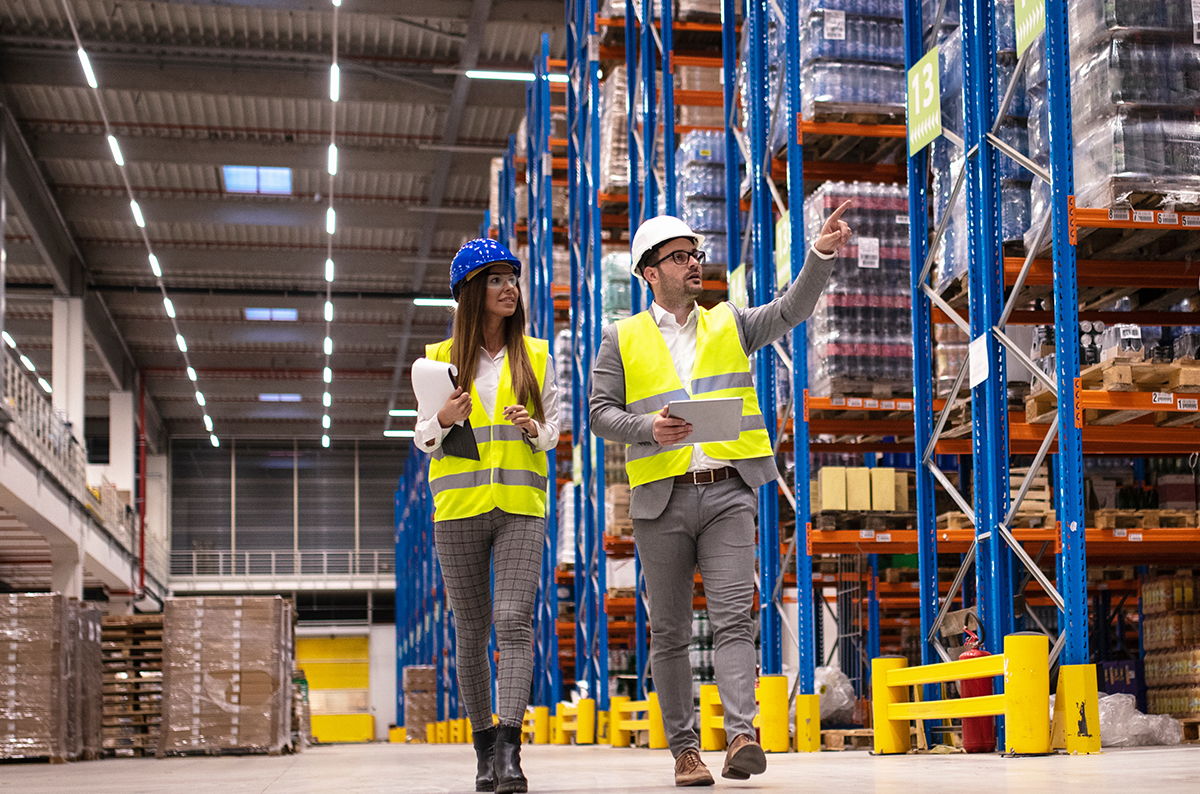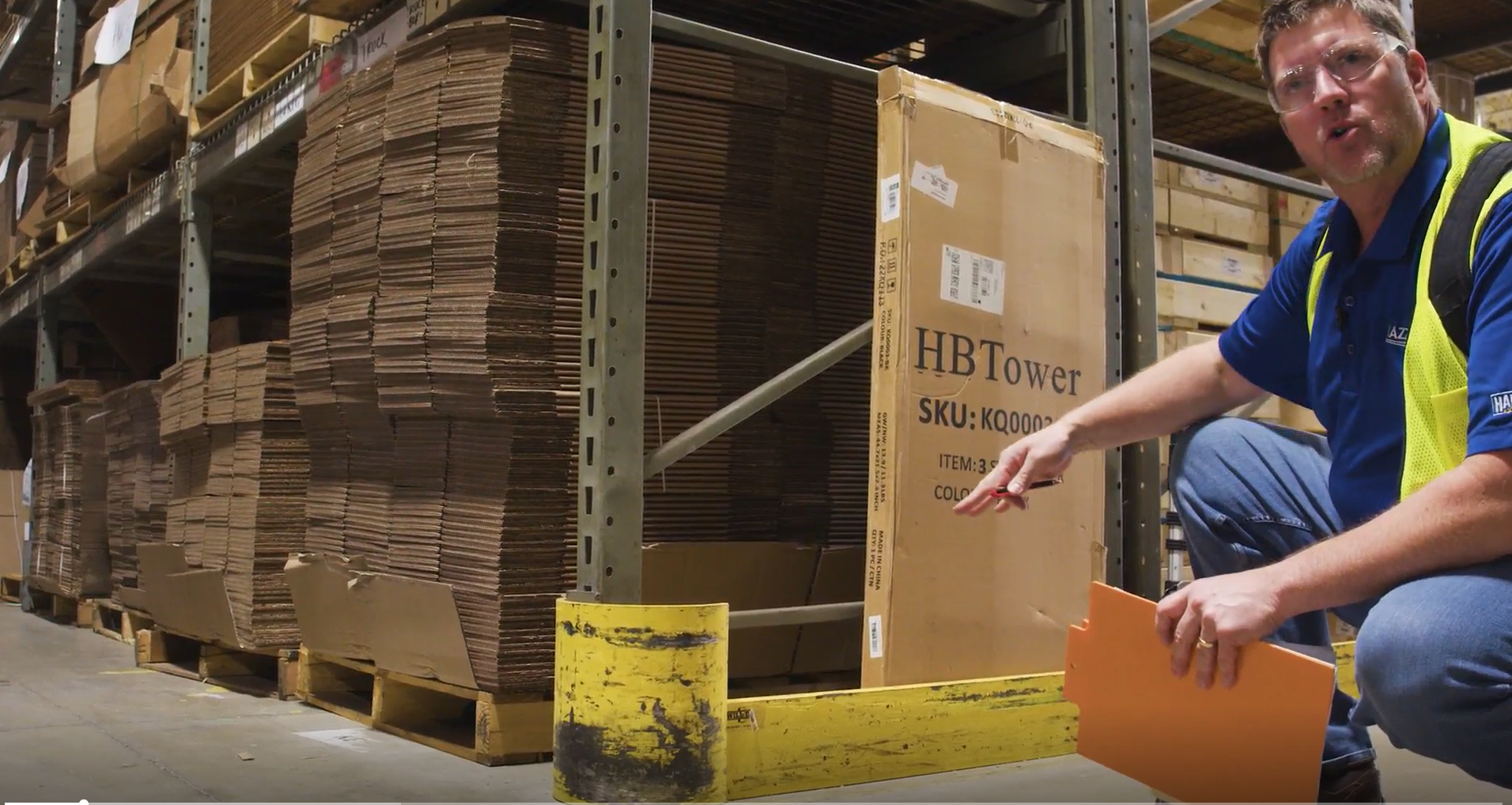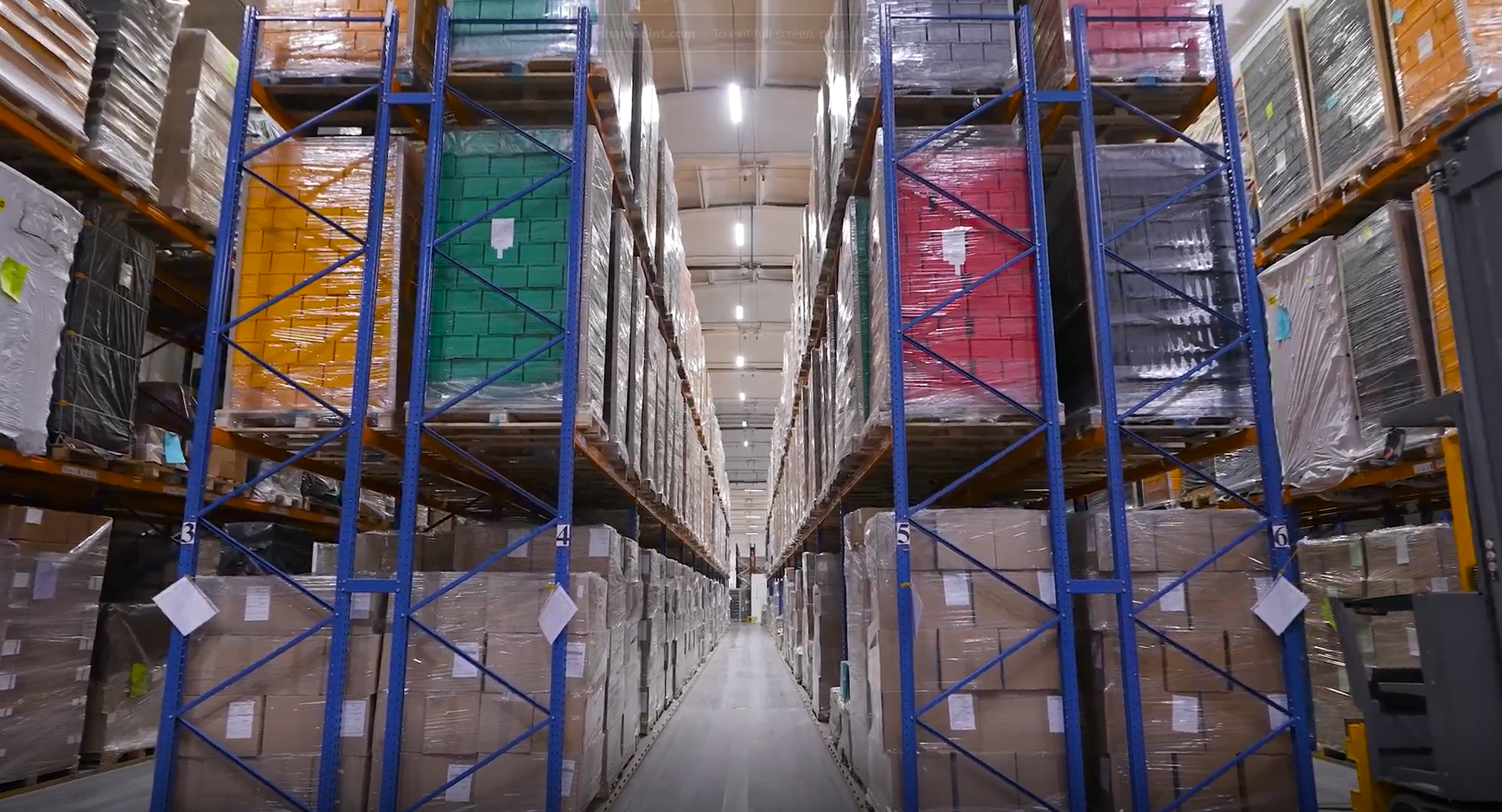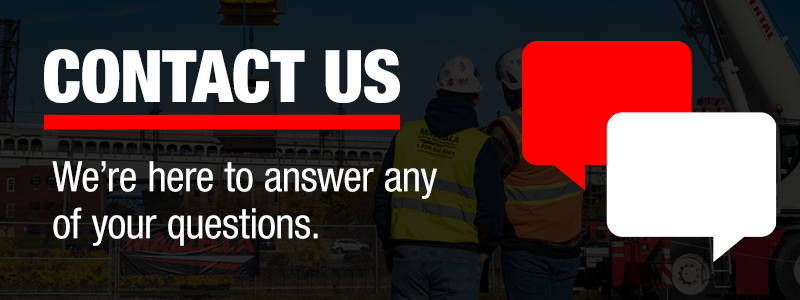What Is AI’s Role in Warehouse Solutions?
AI is already transforming the warehouse and logistics industry. Find out how it’s affecting pallet rack system designs, its strengths and weaknesses, and how integrators can adapt.
From layout planning to inventory tracking, AI-driven tools are already transforming the way warehouses operate. Like all industries today, warehouse operators are no longer wondering if they will use AI. Now, they are trying to figure out how it should be used.
Warehouse solutions experts are already seeing this shift firsthand. Customers are now using AI platforms to do tasks in seconds that would normally take a specialist much longer to complete.
Our Warehouse Solutions experts often get asked, “Are pallet rack customers turning to AI instead of integrators?”
The short answer is no — but AI is definitely changing the conversation. We’re seeing customers adopt AI to improve pallet racking efficiency in ways that were harder to achieve before.
The rise in AI is raising other important questions within industry circles. Will warehouse integrators be replaced by AI? How will companies use AI in their warehouse operations? By the end of this article, you will have answers to these questions, along with other key insights. Here’s what we’ll cover:
How Is AI Being Used in Warehouse Management?
One of the most immediate benefits of AI in warehouses is pallet racking design and efficiency. AI can recommend pallet positions, aisle spacing, and even the type of decking required based on a warehouse’s size and intended capacity.
In fact, customers can use AI platforms to generate vendor recommendations, material lists, and layout options in under a minute—work that previously required estimators much longer to complete. This is part of a growing trend in consumer habits, where people are shifting towards AI tools like ChatGPT, instead of search engines like Google, to vet and compare different vendors.
On the operations side of warehouses, AI tools are being used for a variety of tasks, automating tasks like picking, packing, and sorting, while also enhancing demand forecasting, predictive maintenance, and safety measures.
Can AI Replace Warehouse Integrators?

It is tempting for some to view AI as an all-in-one solution for warehouse management. For many companies, especially mom-and-pop shops with limited budgets, the idea of not having to budget for a third-party rack integrator is attractive.
But the reality is more nuanced. Even with AI’s impressive capabilities, there are crucial areas where warehouse integrators remain indispensable.
While AI can generate material lists and floor layouts, it can’t
- Walk the warehouse floor and assess forklift paths for safe maneuvering
- Interpret complex standards such as OSHA or RMI regulations in the context of a unique facility
- Manage vendors, installers, and schedules
- Troubleshoot unexpected on-site challenges
- Build a meaningful, lasting relationship with customers
These tasks require experience, accountability, and an understanding of the unpredictable conditions that come with warehouse projects. Warehouse integrators bring long-term service, trust, and accountability—qualities AI can’t replicate.
Human Trust
Customers do not just purchase racking systems or mezzanines; they invest in the knowledge, reliability, and service that experienced integrators provide.
The human element will remain central to why customers choose warehouse integrators. You can buy these products from anywhere, but why are you buying them from a specific company? For many, you are also buying that company’s experience, know-how, and trust.
How Can Warehouse Integrators Use AI?

Rather than viewing AI as a competitor, it’s better for warehouse professionals to see it as an ally. Instead of just being a rack salesperson or a mezzanine salesperson, integrators now have AI that, added to their toolbox, helps their customers maximize the efficiency of their space.
By combining AI’s rapid analysis with the integrator’s ability to adapt designs to real-world conditions, customers benefit from:
Smarter Designs
AI delivers options quickly, which integrators refine for compliance and practicality.
Faster Implementation
One of the biggest strengths of AI is removing much of the “grunt work” at the beginning of projects. Now, warehouse integrators can move from concept to execution more efficiently.
Improved Accuracy
AI can double-check material lists, layouts, and spacing, reducing costly mistakes.
Enhanced safety
Human oversight ensures layouts meet compliance standards and promote safe operations.
AI as a “Calculator” for Warehouse Professionals
It’s similar to the calculator’s arrival in workplaces decades ago. Initially met with skepticism, calculators soon became an essential tool to double-check math and improve efficiency. In the same way, AI can serve as a validation mechanism for warehouse estimators, ensuring accurate quotes and design plans without replacing the estimator’s judgment.
This hybrid model—AI insights guided by integrator expertise—represents the future of warehouse solutions.
Comparison Chart: AI vs. Human Warehouse Integrators
| Function / Capability | AI Capabilities | Human Integrator Capabilities |
| Speed of Estimates | Generates material lists and layouts in under a minute. | Requires manual calculations and checks, ~30 minutes. |
| Design Validation | Provides baseline calculations and identifies discrepancies. | Applies context, judgment, and industry experience. |
| Safety & Compliance | Cannot interpret OSHA/RMI standards in real-world conditions. | Ensures designs comply with OSHA and RMI requirements. |
| On-Site Assessment | Limited—cannot walk the warehouse floor or assess forklift paths. | Evaluates warehouse environment directly for safety. |
| Project Management | Cannot coordinate vendors, schedules, or troubleshoot issues. | Manages vendors, installers, and solves on-site issues. |
| Accountability & Trust | Provides insights but no accountability. | Offers long-term service, reliability, and support. |
| Innovation Potential | Rapid analysis, predictive capabilities, scalable across systems. | Integrates insights with practical execution and trust. |
How Can Businesses Adopt AI Without Losing Integrator Support?

For businesses considering AI adoption, the goal is not to replace integrators but to use AI as a tool. Here are a few examples of how you can start integrating AI into your warehouse operations.
Use AI for Estimation and Validation
Businesses can allow AI to generate quick layouts and material lists, then confirm accuracy through experienced estimators.
Use AI as a Research Tool
AI thrives as a research tool. Whether you need to learn about industry standards or need to research vendors in your area, there are several AI-powered tools to improve your research process.
Don’t Use AI for Compliance and Project Management, Use Integrators
While AI may suggest a great pallet rack design, integrators need to be there to ensure it meets OSHA and RMI requirements and fits a building’s constraints.
Consult With Your Company Before AI Use
AI is still very much a new phenomenon. Many researchers still don’t know how complex AI-powered systems can become and the potential safety implications. Consequently, every company has different rules regarding AI usage. Consult with your company’s IT department before using any system and remember not to plug classified / sensitive information into them.
Final Thoughts on AI’s Role in Warehouse Solutions

AI can accelerate warehouse project timelines, improve efficiency, but only integrators deliver trust, accountability, and long-term service.
Resisting AI is not the solution. Instead, warehouse integrators must embrace it as a tool while doubling down on their human strengths. You can either be an advocate and ride the wave in or resist and risk being left behind.
While many warehouse integrators see AI as a potential threat, adopting AI can make life easier for them. By adopting AI into their workflows, integrators like Mazzella can deliver faster, smarter, and safer solutions while continuing to provide the trust, service, and compliance expertise customers depend on. The future of warehouse solutions is not AI versus integrators. It is AI-powered integrators, who master the human elements of this industry, who will lead the way.
For more on how Mazzella is innovating in warehouse design, project management, and compliance, visit our warehouse solutions library.

Copyright 2025. Mazzella Companies.

